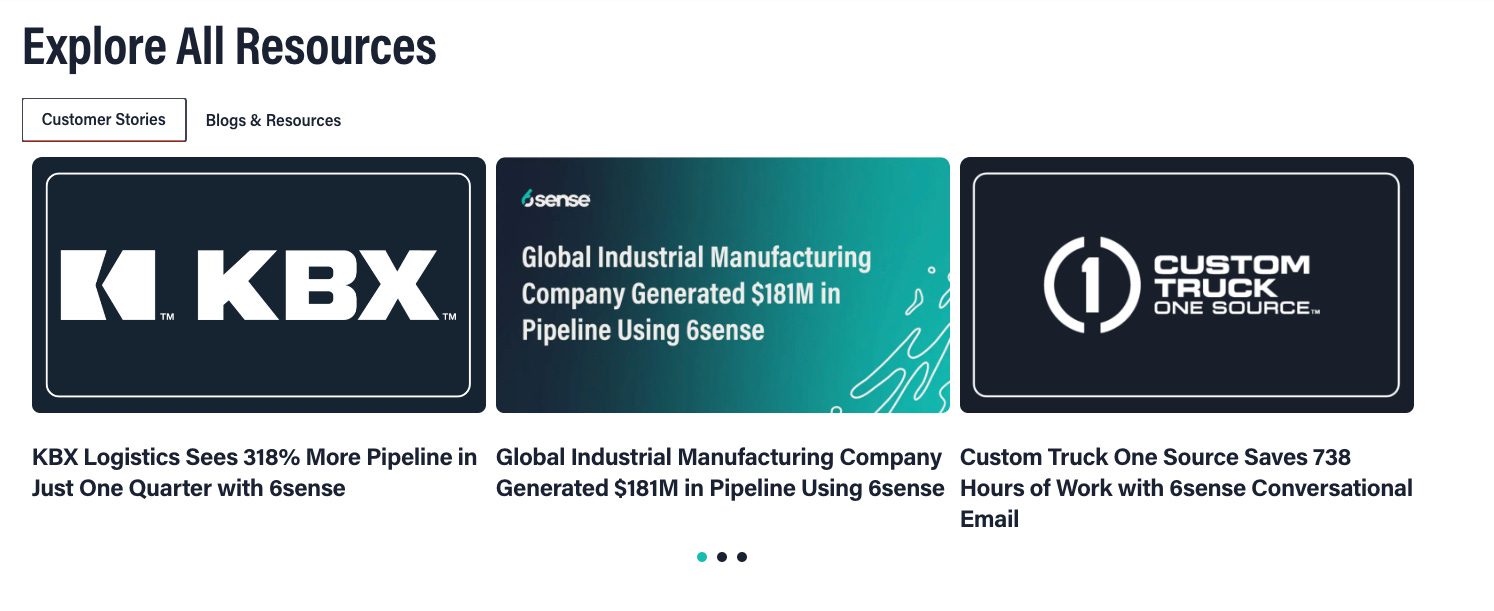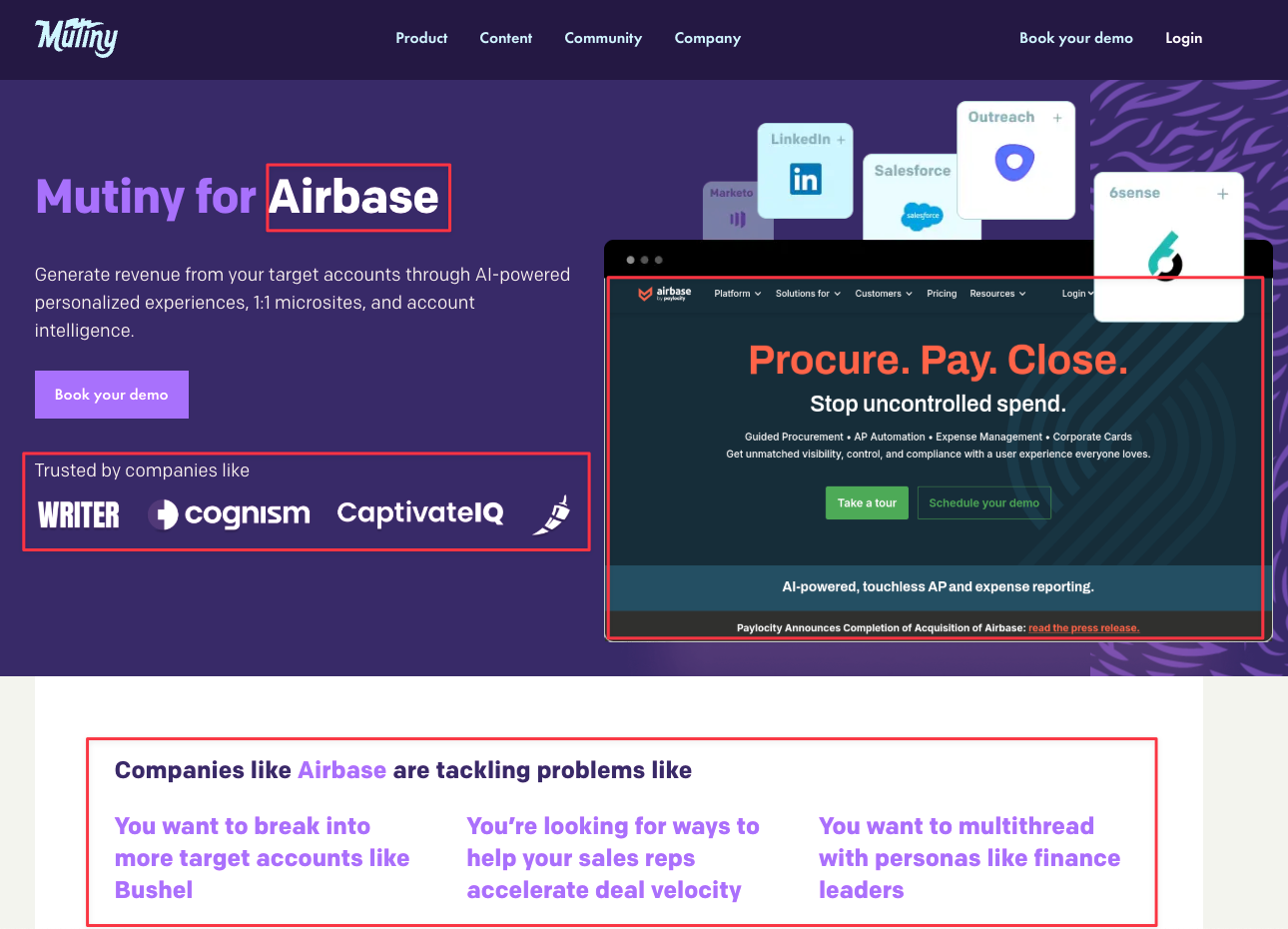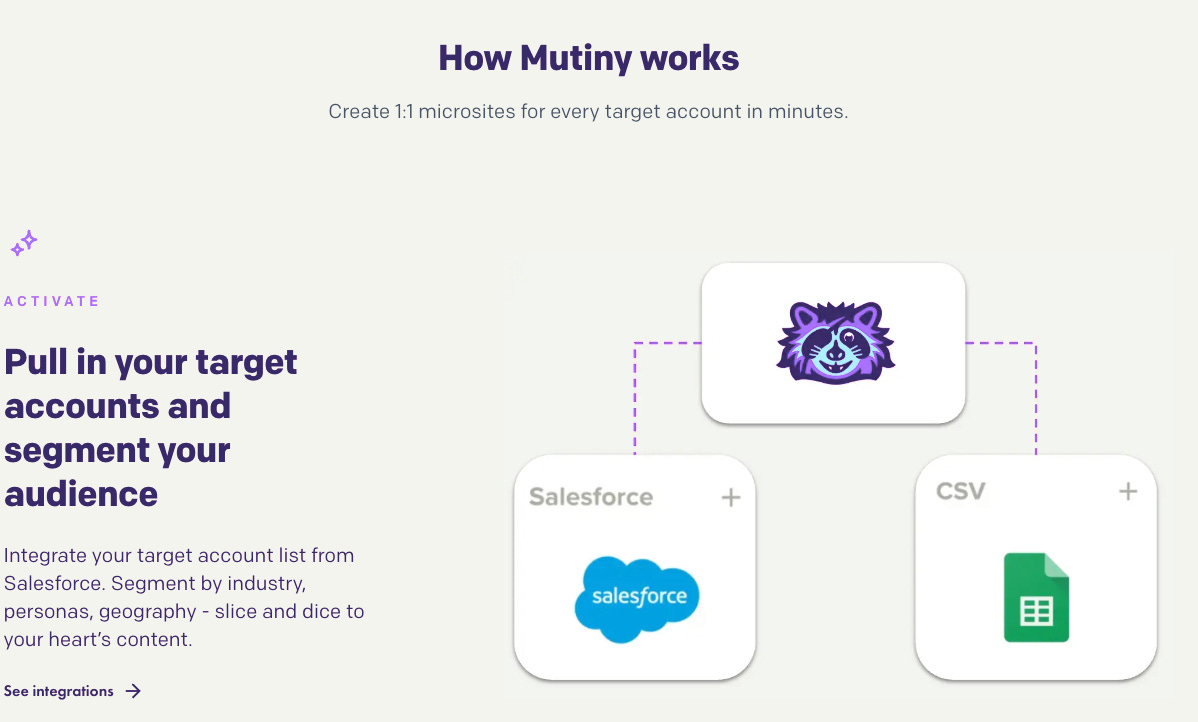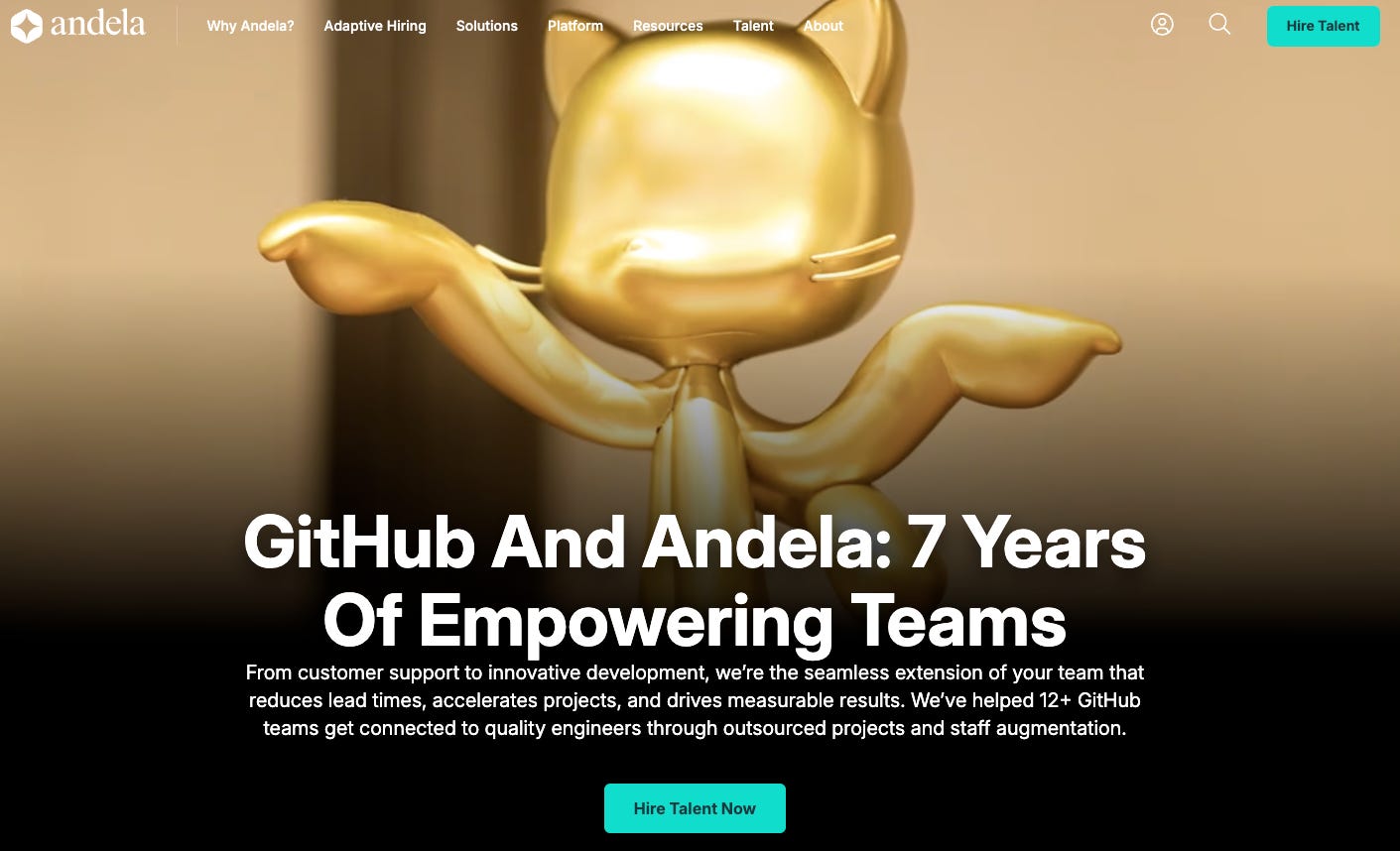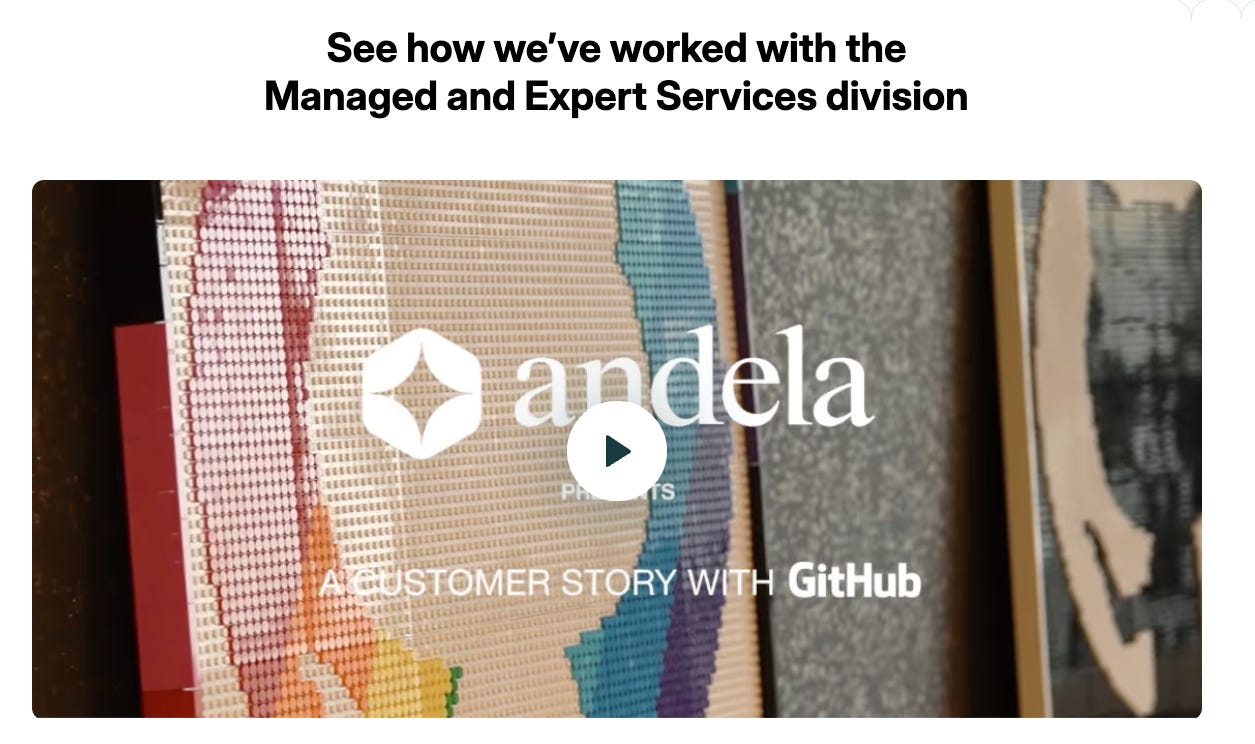4 Top Outbound Teams Are Booking More Meetings With Mini-Sites
Here’s how they 4x their results (Snowflake, Andela, 6sense, Mutiny)
Read time: 4 min
👋 Hey, Elric here! Welcome to this week’s free edition of Outbound Kitchen. Every week, I break down real questions about scaling outbound so you can turn it into your #1 growth engine. Thinking about upgrading to the paid newsletter? Here’s what you’ll get:
Instant access to 10 paid newsletters, including:
Next up: Pigment’s Outbound Secret Sauce: $25M pipeline every month
My Outbound Chef Kit: 20+ email templates, cold call scripts, AI prompts, top outbound tools, and more, everything the best outbound teams use. Worth $1,000+
And the best part? You can try it free for 7 days. Cancel anytime.
But I think you'll love it!
👉 Start your free trial today.
Quick note:
🤙 The Outbound Kitchen Community is coming
When I talked to subscribers, they kept asking: “What about a community?”. Well… it’s happening. The OK community is where we’ll cook outbound recipes together. If you want early access, sign up here.
Heads up: Paid newsletter members get in at their current price as early supporters. After launch? The price goes up.
🏔️ Online Summit: Outbound in 2025
I’m putting together a no-BS online summit for B2B outbound teams, not another salesy, fluff-filled event. No fluff. No sales pitches. No theory. Just real tactics that work right now. Want early access? Sign up here, and you’ll be the first to know when free registration opens!
While writing my deep dive about Snowflake and my Guide to Building an Enterprise Prospecting System.
I came across a video from Snowflake’s Head of ABM. She shared how they align their Account-Based messaging and use mini-sites. In both their ABM strategy and cold outreach.
This stuff works:
SDRs book 2-4x more meetings when targeting ABM accounts.
36/100 accounts booked meetings vs. only 10/100 in non-ABM.
Deals close 2x faster from SQO to Won.
Other GTM teams have similar results.
So I did some digging, and I’m going to show you how 4 GTM teams, Andela, Snowflake, 6sense, and Mutiny, use mini-sites in their Account-Based Strategy. Plus, I’ll break down the 3 levels of relevancy they use to improve pipeline creation:
⭐️ - Industry-Specific
⭐️⭐️ - Account-Specific
⭐️⭐️⭐️ - Prospect-Specific
Now, here’s how they actually use those mini-sites:
Instead of dumping traffic onto their generic website homepage, they send prospects to custom-built mini-sites designed specifically for them.
And they do this in two ways:
1️⃣ Through ABM campaigns (LinkedIn ads, retargeting, etc.).
2️⃣ In cold outreach (SDRs and AEs include the mini-site link in their emails and LinkedIn messages).
Here’s how Mutiny plays the game the right way:
A target account visits their website and takes specific actions.
A BDR immediately reaches out (but not with some generic pitch)
They send a personalized URL (a mini-site made just for that account).
So if you’re still sending prospects to your homepage and praying for results, you’re doing outbound wrong.
Let’s fix that.
Let’s get cooking.
1. Industry-Level
Example 1: Snowflake
Here’s how Snowflake personalizes their pages at the industry level (and why their meeting rates are 4x higher than non-personalized pages):
Headline: Speaks directly to the industry’s biggest pain points.
Image: Aligned with the industry.
Insurance industry
Example: If they’re targeting insurance companies, the page looks and feels like it was built for insurance buyers, not some generic pitch.
Airline:
Manufacturing:
Example 2: 6sense
Now, let’s talk about 6sense.
They take it up a notch by creating 5 different industry pages, each packed with:
Case studies from customers in that industry
Quotes from real customers in that industry
Content relevant to that industry
Example:
On their manufacturing page, everything is about manufacturing—real customer stories, real problems, real solutions.
2. Account-Level
Most people think adding a company name is enough. It’s not.
Great relevancy is about showing why a prospect should care.
Example 1: Snowflake
Instead of just slapping a company name on a page, they add:
A personal note from the sales rep → Why this matters, why they should care, and what’s in it for them.
Curated content → Blogs, eBooks, reports, like Netflix recommendations, but for business.
Example 2: Mutiny
Mutiny takes this to another level with microsites built for specific accounts. They use CRM and account data to create these at scale (no manual work per account). These pages feel hyper-relevant without wasting time.
Company name on the page
Screenshot of their website
Logos from similar-sized customers
Specific tools the prospect uses + how Mutiny integrates
3 pains relevant to the account
For example:
1 - Airbase (mid-market prospect)
2 - Gong (enterprise prospect)
Example 3: Andela
Andela built a dedicated page for GitHub (one of their enterprise customers).
Headline → Highlights how long they’ve worked together.
Results → Shows exactly what GitHub achieved using Andela.
Customer video → A GitHub division talking about their experience.
Their post-sales team:
Chili Piper calendar link → A frictionless way to book a meeting.
3. Prospect-Level
Example: Snowflake
Snowflake takes this to the next level with pages built for individual prospects. And they don’t just stop there—they support these pages with one-to-one ads and personalized direct mail to keep prospects engaged.
What’s on these pages?
Headline → Directly calls out their pain points.
Subhead → Makes their challenge feel urgent.
Prospect’s name? → Sometimes. But only when it makes sense.
Pro Tip: Don’t Be Creepy
Personalization isn’t about flexing how much you know. It’s about making the prospect feel understood without freaking them out.
It’s like buying someone blue roses because you know they love them… instead of saying, “I know you love blue roses.” One is thoughtful. The other is weird.
Now What? Here’s Your Action Plan
If you actually want to use this in your outbound and ABM strategy, here’s what to do next.
If you're just starting with outbound:
Step 1: Sit down with your marketing and sales team. No silos. Make sure everyone is aligned.
Step 2: Pick your top 3 industries and create mini-sites for each.
Only targeting one industry? No problem. Just make that mini-site hyper-relevant to them.
If you're scaling outbound and/or building an ABM strategy:
Step 1: Same as before—get marketing and sales in the same room.
Step 2: Start simple. Create industry-level mini-sites for your top 3 industries. If you’re focused on one, go all in on that.
Step 3: Add account-level personalization for key target accounts. (This is where the real magic happens.)
Step 4: Keep tweaking. Look at the data. See what’s working. Refine and improve.
Most companies overcomplicate this. They try to do everything at once and end up doing nothing well. Start small, get results, then scale.
Now, go cook those mini-sites.
Want to go deeper? Check these out:
If you actually want to see how the best teams do this, here are some solid examples:
That's it.
Are you using mini-websites in your outbound strategy?
If not, what's holding you back? Hit reply and let me know, I'd love to hear your thoughts!
See you in the next newsletter.
Cheers,
Elric
Want my outbound swipe file with 20+ sequences, scripts, AI prompts, and frameworks (worth $1,000+)?
Upgrade your Outbound Kitchen subscription today for just $22/month and get it all.
Don’t let another week slip by without turning outbound into your top growth engine!
👉 Start your free trial today.
As soon as you're ready, here’s how I can help:
Outbound Consulting Call: Need quick help? Book a 40-min session here.
Outbound Private Chef:
Part-time, I’ll build, optimize efficiency, and execute your outbound strategy.
Coaching/Advising: get tailored advice to fix your strategy, boost efficiency, and drive results.
Interested? Reply to this email or hit me up at bonjour@elriclegloire.com









